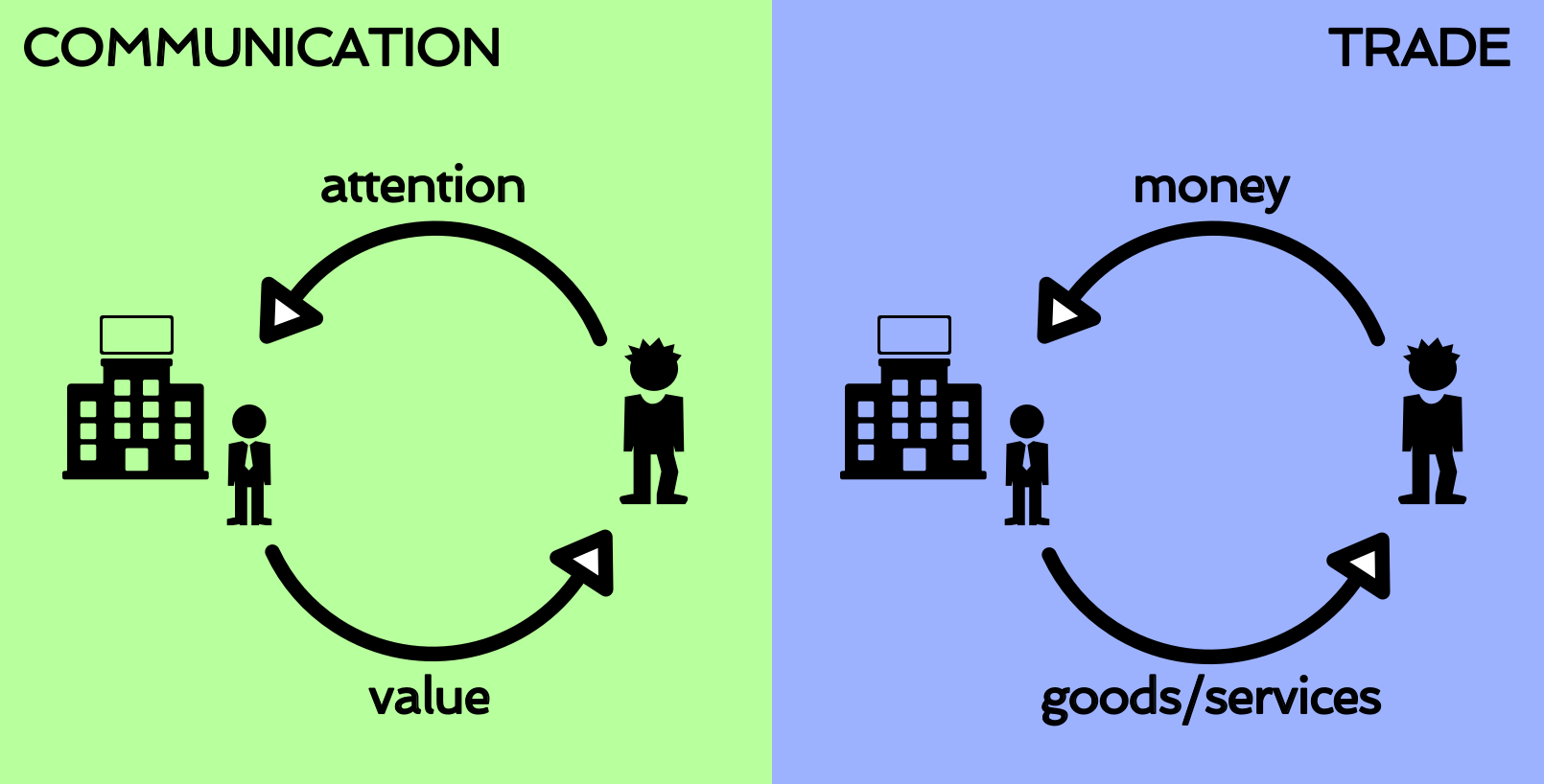Authenticity Mapping
Let’s talk a bit more about advertising, shall we?
It’s very much a thing for me – as you can see – and that’s because advertising constitutes the bulk of the contact between the public and the business sector. The explicit purpose, of course, is to sell more, but it very much matters what that contact does in general, for both parties.
In one of those earlier articles I touch upon ad blocking, and the adversarial nature of the relationship of late. One of the reactions from the sector is the trend of “Content Marketing” (CM from here on in) – and I’m here to tell you that this marketing trend can du much, much more than simply provide a possible way of sneaking past the adblocker.
Because that’s the first purpose of it; the audience can’t block advertising if it’s embedded within the content they seek. This view comes with a massive risk, however. Since you, dear reader, are a person (unless I’m wrong about the current state of A.I., in which case, hello, Skynet!), you know what the risk is – because you know how you react if anyone bait-and-switches you. Getting people’s attention under a pretense, and then doing something else, is a great way to make people hate you with the wrath of a thousand fiery suns.
I could ask you if you wouldn’t rather like to be invited than tricking your way in but this isn’t about preference. A meaningful relation with your audience is a lot more valuable on the bottom line than an adversarial one. It’s simple business sense.
OK, so what to do? Well, I like to talk about “Authenticity Mapping”. Let’s start with the “pretense” thing, because that’s either a low bar to bang painfully against, or a low-hanging fruit ripe for the picking. The way to avoid the bait-and-switch experience in CM is to quantify how the content is supposed to have a value to your audience that is different from the advertising value for you. Think of it like this: You’re involved in a transaction with the audience, and you’re going to have to give them something in return for their attention.

if you’re thinking “but I already do; my awesome product!” then no, because that’s a separate transaction
This leads us on to the next step in the mapping process. You’re going to have a content strategy, of course, and we’ve just established that this includes independent audience value – so, what kind of value? This is what leads you to map out what makes sense for you to associate with your brand. There are different ways of doing CM; you could choose to sponsor the production of content that has nothing to do with your product or service – or, you could decide to produce your own content that does have a connection, but also connects to other areas of value, outside of you and your business. Crucially, however, this is a deliberate decision that has to be made, and there has to be a “conceptual backbone”. Simply put, you have to have an answer if anyone wants to know the reason for your decision – and, like the content itself, it has to be believable.
Trustworthiness is indispensable to CM – which brings us to the next mapping level. You see, it isn’t just your CM that has to be trustworthy; because of the concept of source criticism (the internet and social media play a great part here), it’s you as a source that has to be believable. Which means that your other areas of business have to jibe with the voice your CM content has. You cannot, for instance, deliver content that emphasizes things like respect or courtesy, and then have a bottom-rung, outsourced call center that frustrates your customers, or impolite front line personnel. Things like that get out, and before you know it, your new CM strategy is worthless because everyone just roll their eyes when they realize you’re the source.
If this sounds like you have to go change your company into some sort of hippie commune, fret not – turns out most businesses actually have some core value, and that most of the people working there actually mostly want to do a good job and make the customers happy.

your next board of directors meeting…?
What you must do, though, is make this explicit in your CM strategy – remember, people look for answers these days, especially if your output is of an editorial-ish nature. You could say that that’s a downside to CM but you can turn it into an upside. Basically, you can take the opportunity of building a new communication and marketing strategy to look inward and suss out what parts of your existing business represent the kind of values and trustworthiness that support a CM strategy. You’re finding the good stories within your business.
Obviously this comes with the bonus of also doing more of those valuable things – or in other words, a side effect of carrying out an authenticity mapping process in support of your CM marketing strategy is to solidify and improve the core values of your business.
Shall we…?





